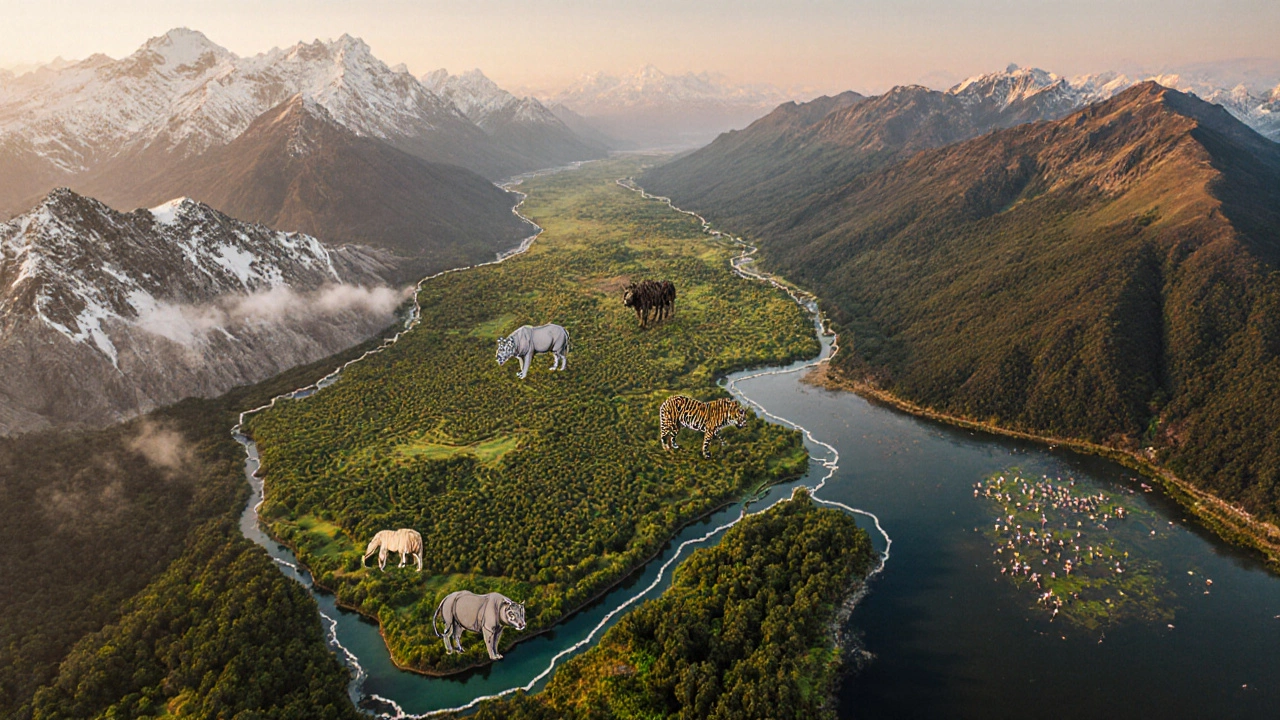SEARCH
UNESCO Natural Sites in India – Explore Protected Wonders
When exploring UNESCO natural sites in India, world‑recognized landscapes and ecosystems that showcase the country’s extraordinary biodiversity and geological marvels. Also known as UNESCO Natural Heritage Sites, they attract nature lovers, scientists, and adventure travelers alike. These sites are more than tourist spots; they are living laboratories that tell the story of Earth’s evolution. UNESCO natural sites India represents a curated list where nature’s finest displays earn global protection.
Key Related Concepts
Understanding these wonders starts with a few core ideas. A National Park, a protected area managed for wildlife conservation and public enjoyment often forms the backbone of a UNESCO natural site. A Biodiversity Hotspot, a region with exceptional species richness and high levels of endemism is frequently cited as a reason for UNESCO designation. Finally, a World Heritage Site, any cultural or natural place of outstanding universal value recognized by UNESCO provides the overarching framework that connects parks and hotspots into a global network.
These concepts intersect in clear ways: UNESCO natural sites in India encompass national parks and biodiversity hotspots; they require strict conservation measures; and the presence of a biodiversity hotspot influences the selection of a World Heritage Site. When you read about the Western Ghats, you’re seeing a hotspot that helped secure multiple UNESCO natural sites. When you hear about Kaziranga National Park, you’re hearing a park that fulfills both wildlife refuge and UNESCO criteria.
Why does this matter for travelers? Many of the posts on this page dive into practical angles—whether you’re planning a trek in the Himalayas, spotting tigers in a sanctuary, or sailing through mangrove labyrinths. The natural sites act as anchors for adventure activities, wildlife spotting, and sustainable tourism. For instance, a guide on “Best Hiking Destinations” will point you toward the rugged trails of the Himalayas, which belong to UNESCO sites like the Great Himalayan National Park. Similarly, a piece on “Zoo vs Sanctuary” can help you decide the best way to experience wildlife while respecting protected areas.
Visiting these sites also means respecting the balance between enjoyment and preservation. Most UNESCO natural sites promote sustainable tourism: you’ll find regulated trek permits, limited visitor numbers, and community‑led conservation projects. Knowing the best season—monsoon for the Western Ghats, winter for the Himalayan peaks, or post‑cyclone months for the Sundarbans—helps you plan a trip that aligns with both safety and ecological sensitivity. Practical tips like hiring local guides, packing low‑impact gear, and supporting eco‑friendly accommodations turn a simple visit into a positive contribution.
From the snow‑capped peaks of the Great Himalayan National Park to the mangrove depths of the Sundarbans, India’s UNESCO natural sites showcase a spectrum of environments. Each site offers a distinct experience: glacier‑filled valleys, tropical rainforests, coastal wetlands, and arid deserts—all home to iconic species such as the snow leopard, Bengal tiger, and Indian rhinoceros. The diversity reflected in these sites mirrors the variety of articles you’ll find below, ranging from budget trekking guides to wildlife sanctuary comparisons. Together, they form a toolbox for anyone keen to explore India’s natural heritage responsibly.
Below, you’ll find a curated collection of posts that dive deeper into the themes introduced here—whether you’re looking for budgeting tips, safety advice, or detailed itineraries for these remarkable places. Use the insights above as a launchpad, then explore each article to plan your next adventure among India’s UNESCO natural treasures.

The Seven Natural Heritage Sites in India: A Complete Guide
Discover all seven UNESCO natural heritage sites in India, their unique wildlife, locations, and how to visit responsibly.
Continue reading